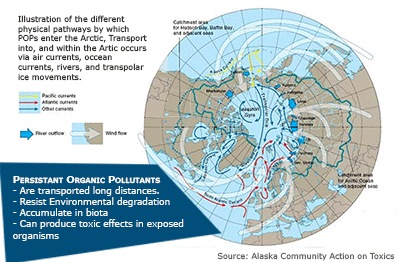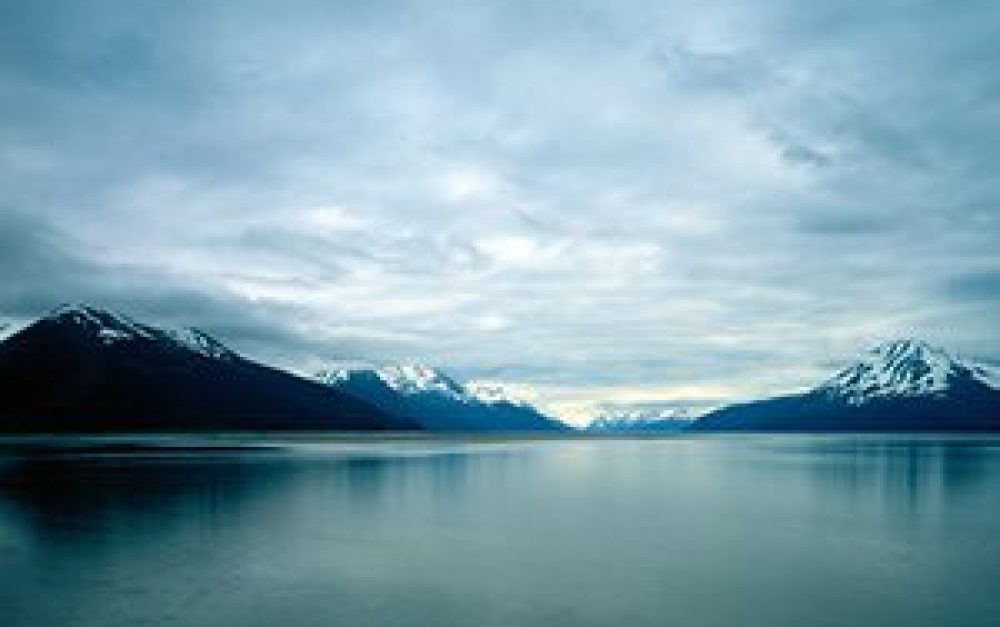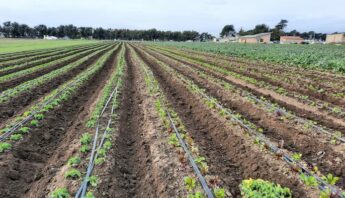Indigenous communities of Inuit Yup’ik living on the St. Lawrence Island of Alaska face a tough winter ahead. For over 20 years, the communities have suffered from unusually high burdens of cancers, miscarriages and other health complications due to their high exposure to persistent organic pollutants (POPs).
Now the people of the island report a startlingly meager harvest of the walruses they rely on for food, as climate change shifts weather patterns and disrupts their traditional hunting practices. Our partners at Alaska Community Action on Toxics are raising emergency funds for these communities so we can all help them through the tough winter ahead.
These two urgent problems — the crises of food and health — are linked by climate change.
A 2011 U.N. report, Climate Change and POPs: Predicting the Impacts, says that POPs trapped in soil, water and ice in the region are now being released due to rising global temperatures. Melting glaciers and permafrost mean release of trapped chemicals that threaten the health of humans and other animals who eat near the top of the global food chain.
POPs health harms
Many, many studies have shown the link between POPs exposure and human health harms. The impacts on the health of Indigenous communities across the Alaskan region have been well documented for years.
 And like the chemicals themselves, the evidence linking health harms to POPs exposure keeps building up. One recent study showed that endometriosis, a painful gynecological disease that can cause infertility, is linked to exposure to organochlorine pesticides, many of which are POPs.
And like the chemicals themselves, the evidence linking health harms to POPs exposure keeps building up. One recent study showed that endometriosis, a painful gynecological disease that can cause infertility, is linked to exposure to organochlorine pesticides, many of which are POPs.
These POPs — pesticides including DDT, endosulfan and lindane, for example — travel on wind and water currents thousands of miles to settle in the Arctic region, and have contaminated the food chain and the bodies of people living here, making their rates of cancer and other diseases alarmingly high.
Arctic food crisis
Now these communities face critical food shortages due to climate change. The residents of Gambell and Savoonga on St. Lawrence Island depend heavily on their annual walrus harvest. In an average year, nearly 1,000 walruses are harvested, but this year a mere 370 were taken between the two communities.
It was spring weather conditions this year that led to this disastrous walrus hunt. The size and severity of storms has increased on the island as stable sea ice has decreased, making it much more dangerous to conduct traditional fishing and hunting activities.
The communities rely on the meat from this harvest to tide them over through the tough winter months. Agriculture is not possible here, costs of food imported from the mainland are prohibitive and the people have very limited incomes and can’t afford to buy much store-bought food. The communities have survived for countless generations through subsistence hunting and food gathering.
Take Action » The need on St Lawrence Island is very real and very urgent — and you can help today. PAN and our partners at ACAT will keep working toward long term solutions as well.
We continue to press for rapid implementation of the Stockholm Convention that targets POPs for global elimination. And we hold up stories like these to help make the case for the difficult yet critical steps needed to halting climate change. Not just for the communities in Alaska, but for all our futures.






